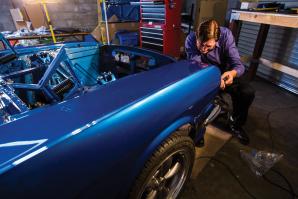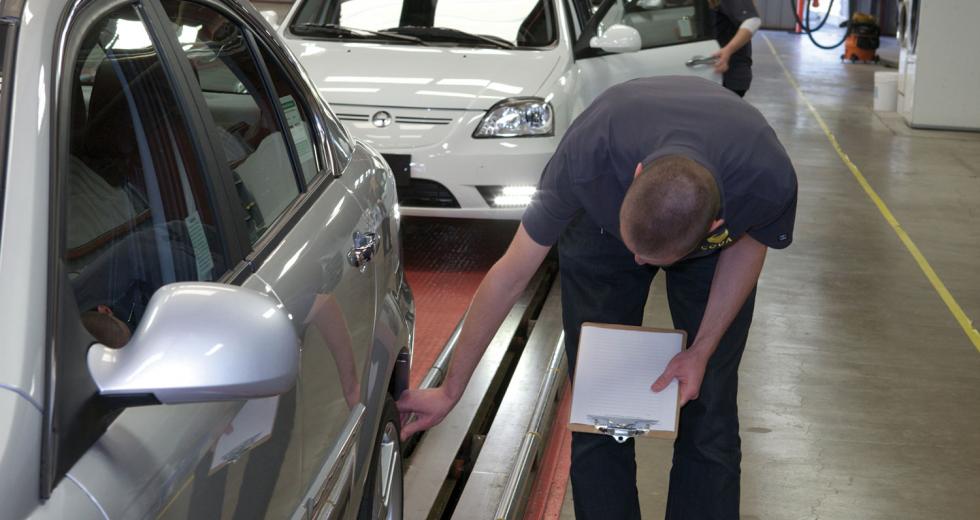An influx of green manufacturing companies and a burgeoning renewable-energy sector is creating the critical mass Solano County needs to usher in a new era of competitive economic growth.
In the past 12 months, three green manufacturing projects took root in the county, creating hundreds of jobs while seizing on the winds blowing through the Montezuma Hills.
Carbon-based energy jobs in industries like petroleum refining and natural gas extraction still dominate the county’s energy-related jobs portfolio. But county leaders are making a shift: From 1995 to 2007, clean energy jobs grew by 72 percent in the county, compared to 4 percent growth in carbon-based energy jobs.
“Solano County is the diverse epicenter of a dynamic mega-region,” says Sandy Person, president of the Solano Economic Development Corp.
The county’s diverse geopolitics and quick access to two of California’s prominent research universities — University of California campuses at Davis and Berkeley — make it a prime location for innovation, Person says. In addition, while the neighboring Capital Region and Bay Area saw employment drops of 1.5 percent and 12.4 percent over the past decade, Solano County saw a modest increase of 0.8 percent.
Also, Solano County’s position upstream of the Bay’s billion-plus dollars of venture capital offers an affordable place for some of those funds and projects to settle, Person says.
Earlier this year, Coda Automotive Inc., maker of electric vehicles and battery systems, opened a finishing plant in Benicia where its largely China-built vehicles are given their final touches.
Benicia’s easy access from the cars’ arrival spot at the Port of Oakland contributed to the plant’s location, says Mario Giuliani, Benicia’s director of economic development.
In April, Altec Industries Inc., which retrofits utility trucks to make them more energy efficient, expanded its Dixon plant by 42,400 square feet and added more than 100 new jobs.
Altec decided to expand in Dixon because of its centralized location relative to three of its largest customers in California: Pacific Gas and Electric Co., Sacramento Municipal Utility District and Southern California Edison, says a spokesperson for the company.
Late last year, Massachusetts-based Blu Homes Inc., maker of pre-fabricated, energy-efficient dwellings, opened its first West Coast manufacturing plant on Vallejo’s Mare Island, a former U.S. Navy base.
From 1995 to 2007, clean energy jobs grew by 72 percent in Solano County, compared to 4 percent growth in carbon-based energy jobs.
The company originally planned to locate in Nevada, but Mare Island’s abundant, easily accessible, industrial-zoned space and proximity to shipping channels, Silicon Valley technology and a booming consumer market prompted the company to Solano County’s southwestern tip, says Dana Smith, Blu Homes spokesperson.
Since opening, Blu Homes has added another assembly line,
doubling its output and its jobs, which now total more than 110,
Smith says.
One of the anchors of Solano’s green energy market is wind. It rushes, at some of the greatest speeds in all of California, through the Montezuma Hills and in the past 30 years has ushered in more than 700 windmills, producing more than 600 megawatts of electricity.
That infrastructure and energy provide the foundation and nexus for other industries, according to Solano County Supervisor Mike Reagan, and has allowed the county to generate more energy than it consumes, a marketable advantage.
While the windmills aren’t made in the county, Reagan says, each installation requires 1,400 man-hours. And, at the center of the state’s transmission network, the county’s abundant conveyance capacity and plethora of wind promises more windmills are on the way.
The transmission infrastructure also benefits solar projects taking place nearby. Travis Air Force Base is exploring the possibility of a large-scale, 30-megawatt solar farm onsite. And a few miles southwest on Mare Island, another developer has plans to build the largest solar farm in all of Northern California.
“Solano County is a great natural resource for green technology,” says Larry Asera, chairman and founder of renewable energy development company Asera Group Inc.
Asera’s company is in the process of coordinating the development of a 100-megawatt solar farm on Mare Island. The island has an underused substation and transmission lines, “good sun” and enough space for the 417,000 solar panels needed to generate that much electricity, Asera says.
Mare Island’s proximity to transportation channels makes it an attractive place for importing parts from China and other countries producing solar energy products. The other transportation networks, like Highway 80 and railroads, make Mare Island a potential solar energy production and distribution center for the whole region, Asera says.
“The county is where high tech meets low tech,” Asera says. After attracting high-end industries, he says, lower-tech jobs, like those involved with solar panel installation, will tap into the county’s diverse, skilled workforce.
Asera envisions a clean tech innovation center on Mare Island, anchored by the massive solar farm. Eventually, he sees solar energy-related industries coming to the island that would manufacture products like batteries and inverters, and, down the road, information technology and data acquisition equipment.
Just across the Napa River from Mare Island, in Vallejo proper, a 40,000-square-foot facility built on 25 acres offers an emerging clean energy technology, one that would put the green in green energy. If the project gets up and running, it would facilitate the production of 30 million gallons of algae-based fuel each year.
Innovative energy technologies like this one, Person says, are what the county hopes to increasingly attract and, at some point, be known for. With an established base of both traditional and renewable energy industries, world-class research institutions nearby and an affordable, accessible location, she and other county leaders expect Solano County’s new-energy sector to blossom.
Did you know?
Anheuser-Busch InBev has spent more than $200 million in the past five years to modernize the Budweiser brewery in Fairfield. These upgrades have made the factory more efficient and have accounted for a 45 percent reduction in water use, according to General Manager Kevin Finger. The amount of water needed to produce one keg of beer is down from six kegs to just three. A wind turbine installed last year generates 13 percent of the facility’s energy on average, but it can produce up to 35 percent of demand in peak wind conditions, Finger says. In addition, 15 percent of the fuel used on site is created by converting waste beer into biofuel.
Recommended For You

Classics Gone Green
A new take on an old favorite
Gary Morton has a dream and a car. If his dream comes true, like those of Henry Ford and Karl Benz before him, Morton will turn his prototype into a car company.
But Morton is not looking to build a big assembly plant or an extensive dealer network. His production will be limited to just one model that will offer baby boomers the nostalgia of the muscle cars they drove in their youth alongside their modern commitment to a pollution-free environment.

It’s Impolite to Squat
EV owners find it increasingly difficult to plug in
Long before it was widely accepted, Sacramento attorney Mike Polis bought his first electric vehicle. He got started with a Toyota Prius, later upgraded to a Nissan Leaf and now drives a white Chevy Volt. On average, he saves more than $3,500 a year over his gas-powered counterparts, he can use the HOV lane as a single occupant and he charges his car for free at work.



